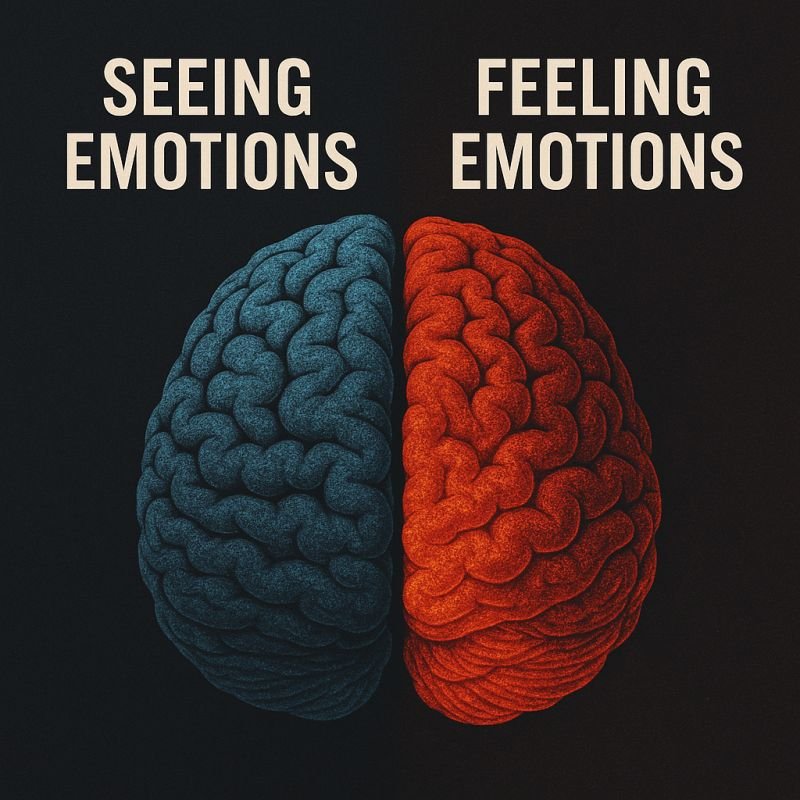What We See vs. What We Feel: The Neuroscience of Emotional Impact in Marketing
We all know a powerful ad when we see one. But how often do we stop to ask—did we feel it, or just recognize that we were supposed to?
A new neuroscience study (Cerebral topographies of perceived and felt emotions, Saarimäki, Heini et al., 2025) offers a fresh lens on this distinction. Researchers used fMRI scans to observe how our brains respond while watching emotional movie scenes. The findings highlight a crucial divide: perceiving an emotion on screen doesn’t guarantee we feel it ourselves. And the difference isn’t just emotional—it’s anatomical.
For marketers, especially those working with AI-based testing or creative optimization, this raises a pivotal question: Are your campaigns sparking genuine emotional engagement—or just signaling it?
© Brainsuite
The Anatomy of Emotion: Perceived vs. Felt
In the study, participants watched more than two hours of emotionally charged movie content while researchers mapped their brain activity. The results revealed two kinds of responses:
Shared emotional states: Emotions like joy, amusement, and surprise triggered strong, consistent brain activation across participants. These feelings were not just seen—they were felt, deeply and collectively. Areas tied to empathy, memory, and self-awareness lit up in sync.
Surface emotions: In contrast, emotions such as guilt, pride, and anger were often perceived but rarely shared. These responses didn’t register the same deep neural engagement.
Interestingly, emotions high in arousal and with clear sentiment polarity—either strongly positive or negative—were far more likely to cross the threshold from screen to sensation.
Why It Matters for Marketers
Emotion drives recall, influences decision-making, and shapes brand perception. But not all emotional cues are created equal. Neuroscience tells us that only some emotions “land”—and the ones that do tend to be visceral, high-energy, and clearly valenced.
This insight is critical for anyone evaluating creative assets, particularly with AI.
Brainsuite’s Take: A Neuroscience-Informed Proxy for Emotional Resonance
At Brainsuite, we take a different route from traditional viewer-response modeling. Instead of trying to track every user’s emotional state, we focus on the emotional architecture embedded in the content itself.
Here’s how it works:
Our AI models measure arousal and sentiment polarity across all creative assets.
Neuroscience shows that content scoring high in these dimensions—like amusement, fear, or surprise—is more likely to evoke a felt response.
This gives us a science-backed, content-level proxy for predicting emotional impact.
We don’t guess. We don’t generalize. We translate the way the brain processes emotional content into actionable insights for marketers.
Whether you're testing a TVC, digital banner, or social ad, Brainsuite provides clear indicators on whether your creative is likely to resonate—not just be recognized.
From Recognition to Resonance
In a cluttered media landscape, surface-level emotion is not enough. The best-performing content doesn’t just mimic feeling—it elicits it. And now, thanks to neuroscience and AI, we have the tools to predict which assets are likely to make that leap.
👉 Ready to evaluate your creative for real emotional impact? Explore our platform and learn how Brainsuite helps you move from recognition to resonance—at scale.
Sources:
Saarimäki, H., Nguyen, M., Oosterhof, N. N., et al. (2024). Cerebral topographies of perceived and felt emotions. Imaging Neuroscience. https://direct.mit.edu/imag/article/doi/10.1162/imag_a_00517/128331/Cerebral-topographies-of-perceived-and-felt

